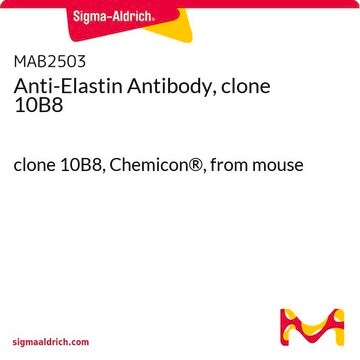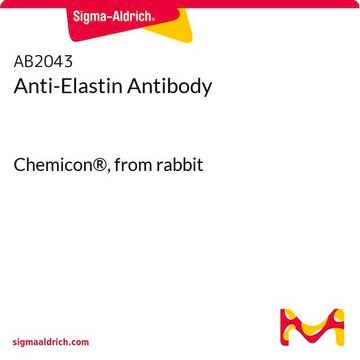Opis ogólny
We are committed to bringing you greener alternative products, which adhere to one or more of The 12 Principles of Green Chemistry.This antibody is Preservative-free, produced without the harm or sacrifice of animals and exceptionally stable to allow for ambient shipping and storage if needed and thus aligns with "Waste Prevention", "Designing Safer Chemicals" and "Design for Energy Efficiency".
Click here for more information.
ZooMAb® antibodies represent an entirely new generation of recombinant monoclonal antibodies.Each ZooMAb® antibody is manufactured using our proprietary recombinant expression system, purified to homogeneity, and precisely dispensed to produce robust and highly reproducible lot-to-lot consistency. Only top-performing clones are released for use by researchers. Each antibody is validated for high specificity and affinity across multiple applications, including its most commonly used application. ZooMAb® antibodies are reliably available and ready to ship when you need them.
Specyficzność
Clone 1G6 is a ZooMAb® Rabbit recombinant monoclonal antibody that specifically detects Elastin. It targets an epitope within 17 amino acids from the C-terminal half.
Immunogen
KLH-conjugated linear peptide corresponding to 17 amino acids from the C-terminal half of human Elastin.
Zastosowanie
Quality Control Testing
Evaluated by Western Blotting in Human lung tissue lysate.
Western Blotting Analysis: A 1:1,000 dilution of this antibody detected Elastin in Human lung tissue lysate.
Tested Applications
Immunofluorescence Analysis: A 1:100 dilution from a representative lot detected Elastin in human lung tissue sections.
Immunohistochemistry (Paraffin) Analysis: A 1:100 dilution from a representative lot detected Elastin in human lung tissue sections.
Note: Actual optimal working dilutions must be determined by end user as specimens, and experimental conditions may vary with the end user.
Opis wartości docelowych
Elastin (UniProt: P15502; also known as Tropoelastin) is encoded by the ELN gene (Gene ID: 2006) in human. Elastin is a connective tissue protein found in the extracellular matrix of most vertebrate tissues and is an important part in the interstitium of tissues. it is also a component of ECM proteins involved in the tumor microenvironment where it is reported to modulate the cellular physiology of tumor cells, stromal fibroblasts, smooth muscle cell, endothelial cells, and inflammatory cells. It has an extensive crosslinked structures that imparts a long half-life to this protein. Due to its polymeric nature, it resists acid and alkali treatment. It is about 1000-fold more flexible than collagens; thus, its main function is to provide elasticity to tissues. Elastin is synthesized with a signal peptide (aa 1-26), which is subsequently cleaved off to produce mature protein (aa 27-786). Its expression is observed in large arteries, heart valves, pulmonary tissue, and certain ligaments and cartilages. It is an essential component of tissues that undergo rapid expansion and recovery. Elastin is formed through cross-linking of tropoelastin, the precursor form of elastin. The cross-linking is initiated through the action of lysyl oxidase on exposed lysines to form allysine. The most abundant cross-links in mature elastin fibers are lysinonorleucine, allysine aldol, desmosine, and isodesmosine. Tropoelastin contains two major domains: alternating hydrophobic regions and hydrophilic cross-link domains. The hydrophobic domains are reported to be rich in non-polar amino acids (glycine, valine, proline, and alanine) that appear in repeats of 3 to 6 peptides. The hydrophilic cross-link domains are rich in alanine and lysine and are required for the lysyl oxidase-mediated formation of desmosine cross-links. These are required for the formation of insoluble elastin. Thirteen different isoforms of elastin have been described that are produced by alternative splicing. This ZooMAb® recombinant monoclonal antibody, generated by our propriety technology, offers significantly enhanced specificity, affinity, reproducibility, and stability over conventional monoclonals. (Ref.: Wang, K., et a; (2021). Front. Cell Dev. Biol. 9; 596702; Li; J., et al. (2020). BMC Cancer. 20(1); Article 217).
Postać fizyczna
Purified recombinant rabbit monoclonal antibody IgG, lyophilized in PBS with 5% Trehalose, normal appearance a coarse or translucent resin. The PBS/trehalose components in the ZooMAb formulation can have the appearance of a semi-solid (bead like gel) after lyophilization. This is a normal phenomenon. Please follow the recommended reconstitution procedure in the data sheet to dissolve the semi-solid, bead-like, gel-appearing material. The resulting antibody solution is completely stable and functional as proven by full functional testing. Contains no biocide or preservatives, such as azide, or any animal by-products. Larger pack sizes provided as multiples of 25 μL.
Rekonstytucja
300 μg/mL after reconstitution at 25 μL per vial. Please refer to guidance on suggested starting dilutions and/or titers per application and sample type.
Przechowywanie i stabilność
Recommend storage of lyophilized product at 2-8°C; Before reconstitution, micro-centrifuge vials briefly to spin down material to bottom of the vial; Reconstitute each vial by adding 25 μL of filtered lab grade water or PBS; Reconstituted antibodies can be stored at 2-8°C, or -20°C for long term storage. Avoid repeated freeze-thaws.
Informacje prawne
ZooMAb is a registered trademark of Merck KGaA, Darmstadt, Germany
Oświadczenie o zrzeczeniu się odpowiedzialności
Unless otherwise stated in our catalog or other company documentation accompanying the product(s), our products are intended for research use only and are not to be used for any other purpose, which includes but is not limited to, unauthorized commercial uses, in vitro diagnostic uses, ex vivo or in vivo therapeutic uses or any type of consumption or application to humans or animals.
This page may contain text that has been machine translated.










